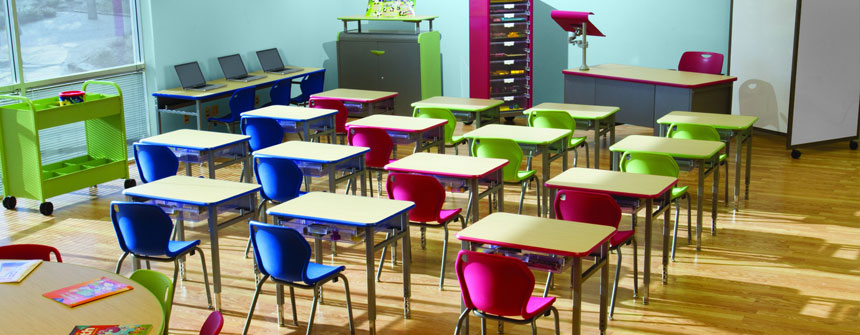Are Special Education Students In Classrooms with Other Students?
The answer to this question is a resounding yes! Special education laws require students to be taught in the “least restrictive environment” for their learning needs. This means students must only be separated from the general population of a school when absolutely necessary by proving the student’s learning needs could not be met in any other way.
An inclusive classroom meets students’ needs socially, emotionally and educationally. Typically, a special education aide or teacher is in the classroom with the regular teacher to modify and adapt lesson plans. Sometimes a student is pulled out for certain subjects but remains with the general class for the rest of the day. This allows students the most opportunity to interact with peers of all abilities while providing the exact level of educational support that is needed. There are many ways to achieve the least restrictive environment and fulfill a student’s educational, emotional and social needs. The following vignettes offer a glimpse of a few of these ways.
Example of an Elementary Day
A typical day for a student in an inclusive elementary classroom might be described as follows. He would join his classmates for opening routines like the pledge, calendar time and share time. During morning reading, he may go to a pull-out class to receive more specific and individual instruction. He would then return to his regular teacher for math. The next part of the day would be full of peer interaction at lunch, recess and an elective class like gym, music or art. He would go back to the regular teacher for science and history, but an aide would be present to differentiate and assist his instruction. In this example, the student was only removed from the general education classroom for specific help in reading. The rest of the day, he is interacting with his peers of all abilities.
Examples of Secondary Inclusion
Inclusive secondary classes are different because of the nature of secondary classes. A secondary special education student would have plenty of time for social interaction at lunch and during electives. She would likely have access to more peers because classes change and she wouldn’t necessarily be traveling with the exact same group of students like an elementary student would. Since each core subject is with a different teacher, she would already be traveling for each class. Her math class could involve being pulled out during independent work time to reinforce the lesson or use an aide or special education teacher in the general classroom to tailor the lesson, for example. If she needed to be in a separate math class altogether, there would be less of a stigma attached because classes are divided and mingled up in so many ways it wouldn’t be as noticeable as in younger years.
The Role of the Parent
It is especially important for parents to realize the part they play in their child’s education. Parents must be their child’s strongest advocates. If a parent feels his or her child is unjustifiably being separated from their peers, it is his or her job to contact the school and begin the process of reviewing the child’s needs and how they will be met.
Socializing with peers is a large part of the education system. Inclusive classrooms make it possible for all students to interact with one another to develop positive social and emotional skills. By creating inclusive classrooms, educators are guaranteeing that students in special education programs will definitely be able to interact with students of all abilities.







